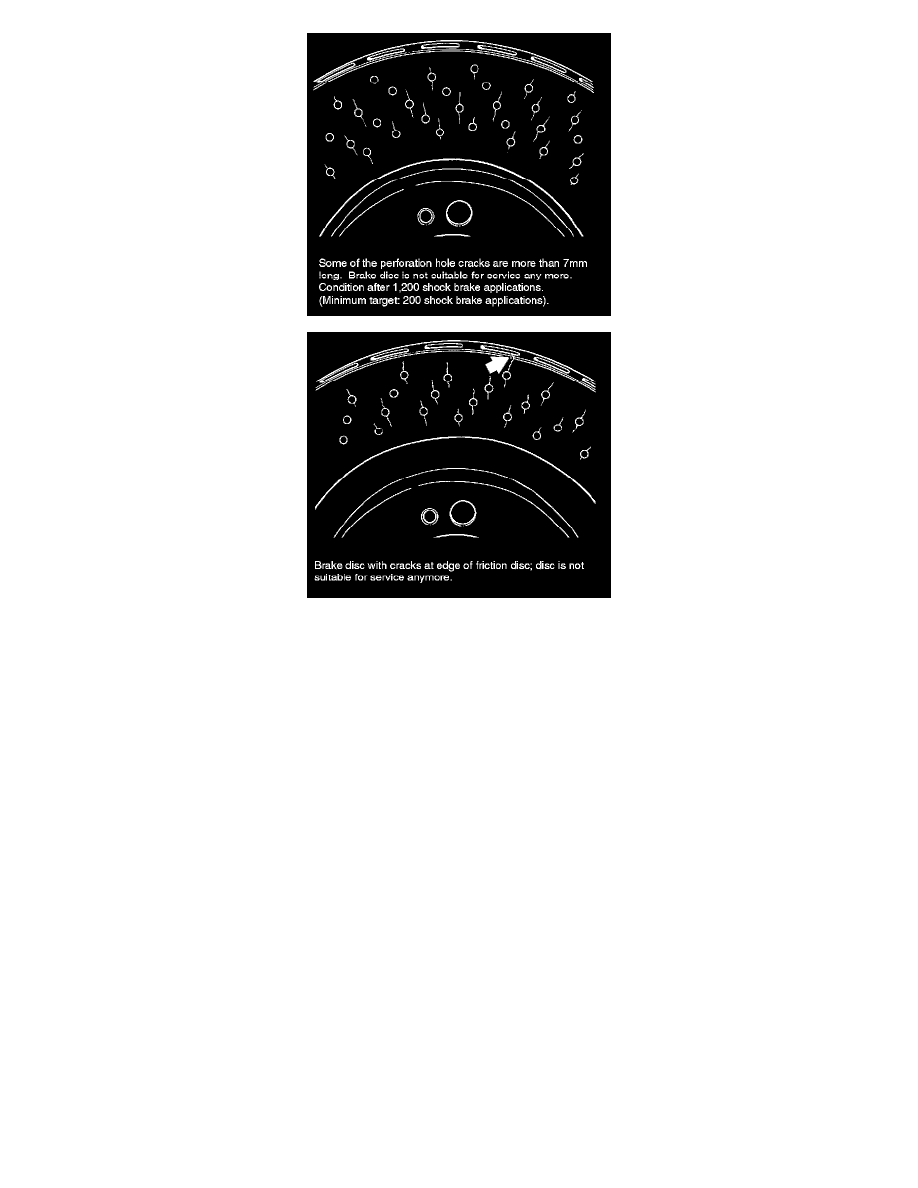911 Turbo AWD F6-3600cc 3.6L SOHC Twin Turbo (1997)

Note
The crack thickness has been highlighted (to make identification easier) and therefore the cracks better visible than they actually are.
2. Checking Brake Disc Minimum Thickness
Notes
Along the innermost and outermost friction disc tracks that have no holes, wear of the corresponding brake pad friction area is lowest - compared to
the center hole area - if the brakes are subjected to high contact pressures. As a result, less severe braking will lead to a corresponding increase of
surface pressure in these areas and, hence, to increased friction disc wear.
The natural ratio of heavy to light braking will produce the typical wear profile of a perforated friction disc in virtually every case (inner and outer,
smooth friction edge zone shows greatest wear. refer to illustration.
As opposed to smooth brake discs where the smallest thickness is measured in the disc center (effective frictional radius), the minimum thickness of
perforated brake discs must always be measured at the inner or outer track of the friction disc that is worn to the greatest extent.
Checking minimum brake disc thickness
